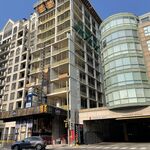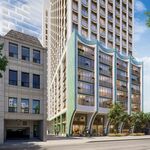Neil
Active Member
+1
That map truly hilights the relief effect the DRL would have.
That map truly hilights the relief effect the DRL would have.
Great map! But what's the data source? 2000? 2001 census? 2006 census?To add to the map collection on this thread, here is a map I just made showing what percent of commuters travel to work by public transit each day
Great map! But what's the data source? 2000? 2001 census? 2006 census?
This are origins I assume. Are destinations available? What about pairs?
Don't forget that there are other close-to-the-subway tower clusters which haven't fared as badly--that at High Park, or those near Davisville and Eglinton. (Or, if you want, everything off Yonge south of Bloor.)
You know, I have absolutely no idea what a commie block is. Are we talking political institutions here?
Perhaps you can talk English?
What ties any/all of these maps together tends to be the presence or absence of apartment/condo towers.
Why has nobody mentioned GO transit improvements?
Brampton is already in the bag. 30 minute off-peak headways on that line please.
Same with Milton (to somewhere in Mississauga), Barrie (to newmarket), and Stouffville (to Unionville).Also increase service on lakeshore E&W. All day train service to Hamilton. All these lines must add a station at Eglinton Avenue if possible.
Then, Eglinton LRT.
What's a commie block? Do you have a specific example from Toronto? Is it an urban ghetto? Or an unappealing astectic?What ties any/all of these maps together tends to be the presence or absence of apartment/condo towers. The income of one yuppie living in an apartment can't really compete with the income of two married yuppies (DINKs, I guess) living in a house, for example. A family of 4 living in an apartment is probably not oging to have the 4 cars necessary to take everyone where they need to go, but a house in the Kingsway might. Then there's the hordes of people that move to apartments near good transit because of the good transit...there's relatively few of these apartments in a spot like the Yonge/Bayview/Leslie zone between Eglinton and Sheppard, which does hurt the transit usage of the Lawrence/York Mills areas despite good transit. That commuting map also excludes travel for school (unless kids are counted as commuters), shopping, leisure, by 905ers, etc., so it can hardly be taken as a measure of total transit trips.
Some commie blocks give other commie blocks a bad name. There are some very attractive, even whimsical, slabs out there, some that have aged well...but there are lots of real beasts and some that are falling to pieces.
What's a commie block? Do you have a specific example from Toronto? Is it an urban ghetto? Or an unappealing astectic?
I didn't really see an explaination, but I didn't look too deep past the bickering. I figured it was easier to ask, because there isn't anything I've seen in Canada that's very comparible to apartment complexes I've seen in Azerbaijan, Armenia, Georgia, and various-stans. In Azeribaijan for example, they've painted the raw concrete exteriors in bright primary colours and it makes a huge difference. Because I've seen a variety in finish and time period and colour, I wanted to know which period/style/country is meant by "commie block" or easier a picture is worth a thousand words.Explained/discussed in the previous page of the thread. And as I suggested, the term's more affectionate than derisive these days--at least in Toronto, where said affection influenced this initiative in part...
I didn't really see an explaination, but I didn't look too deep past the bickering. I figured it was easier to ask, because there isn't anything I've seen in Canada that's very comparible to apartment complexes I've seen in Azerbaijan, Armenia, Georgia, and various-stans. In Azeribaijan for example, they've painted the raw concrete exteriors in bright primary colours and it makes a huge difference. Because I've seen a variety in finish and time period and colour, I wanted to know which period/style/country is meant by "commie block" or easier a picture is worth a thousand words.
internationalist world of skyscraper forums?? Alrighty now ..."commie block" caught on within the internationalist world of skyscraper forums...




